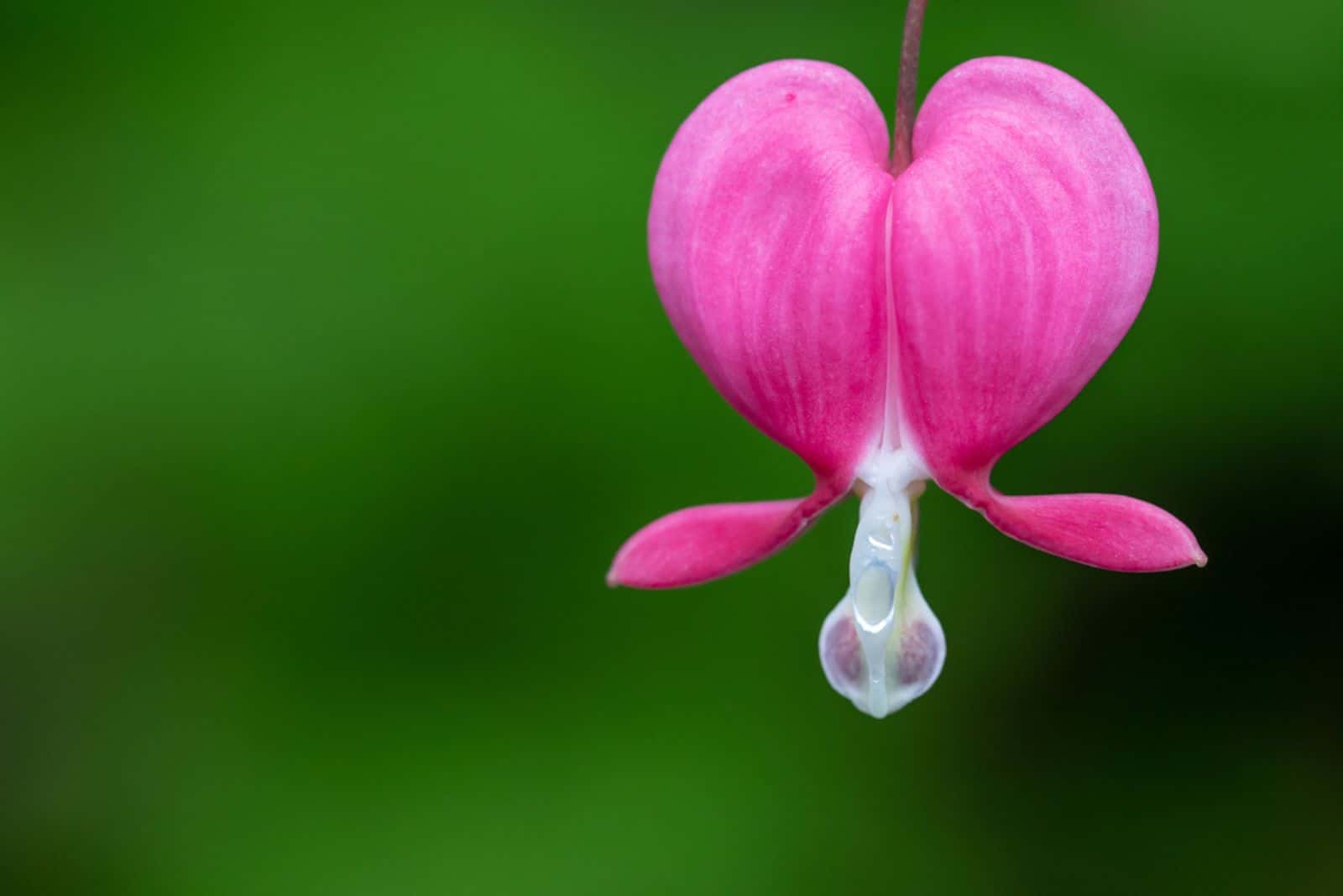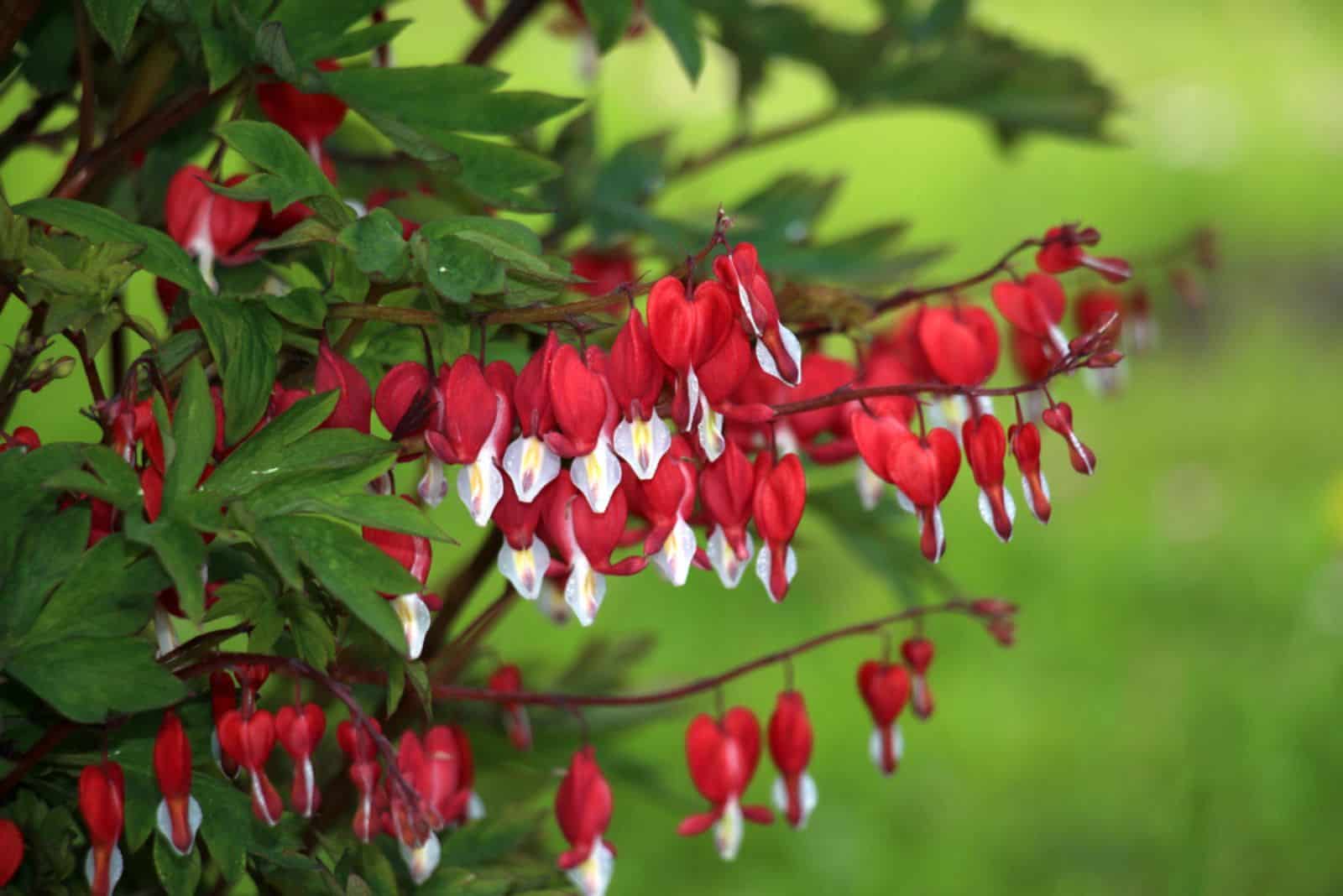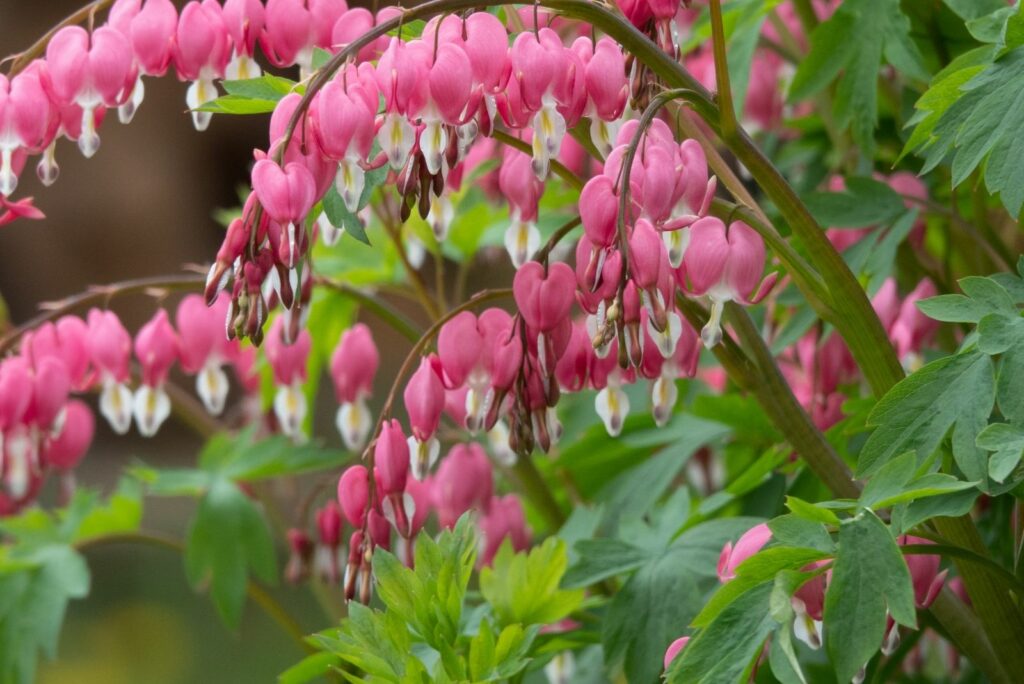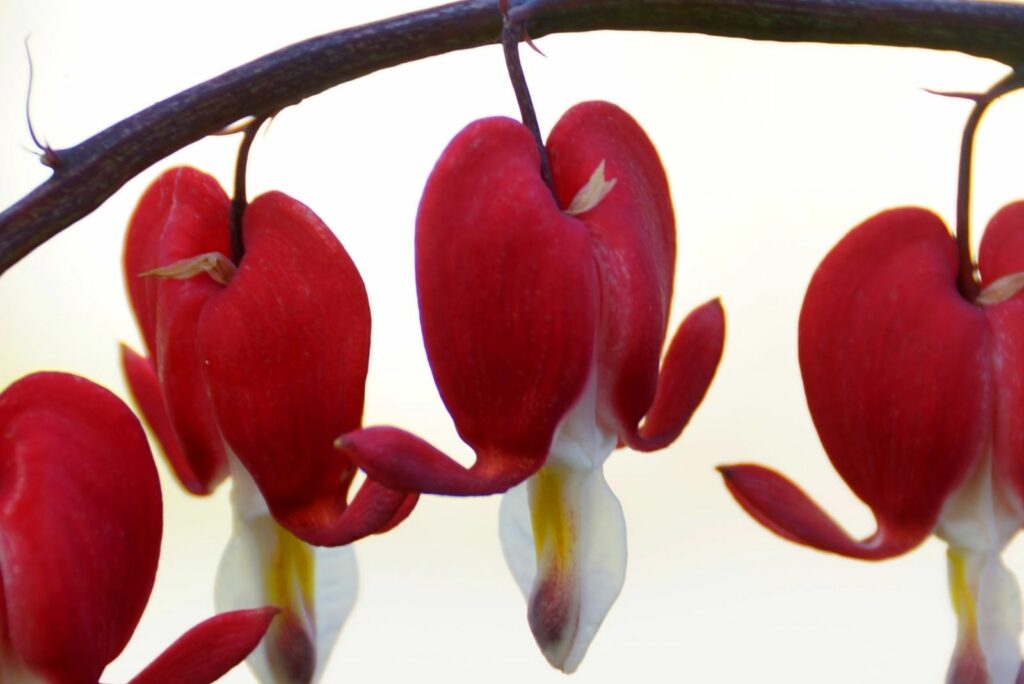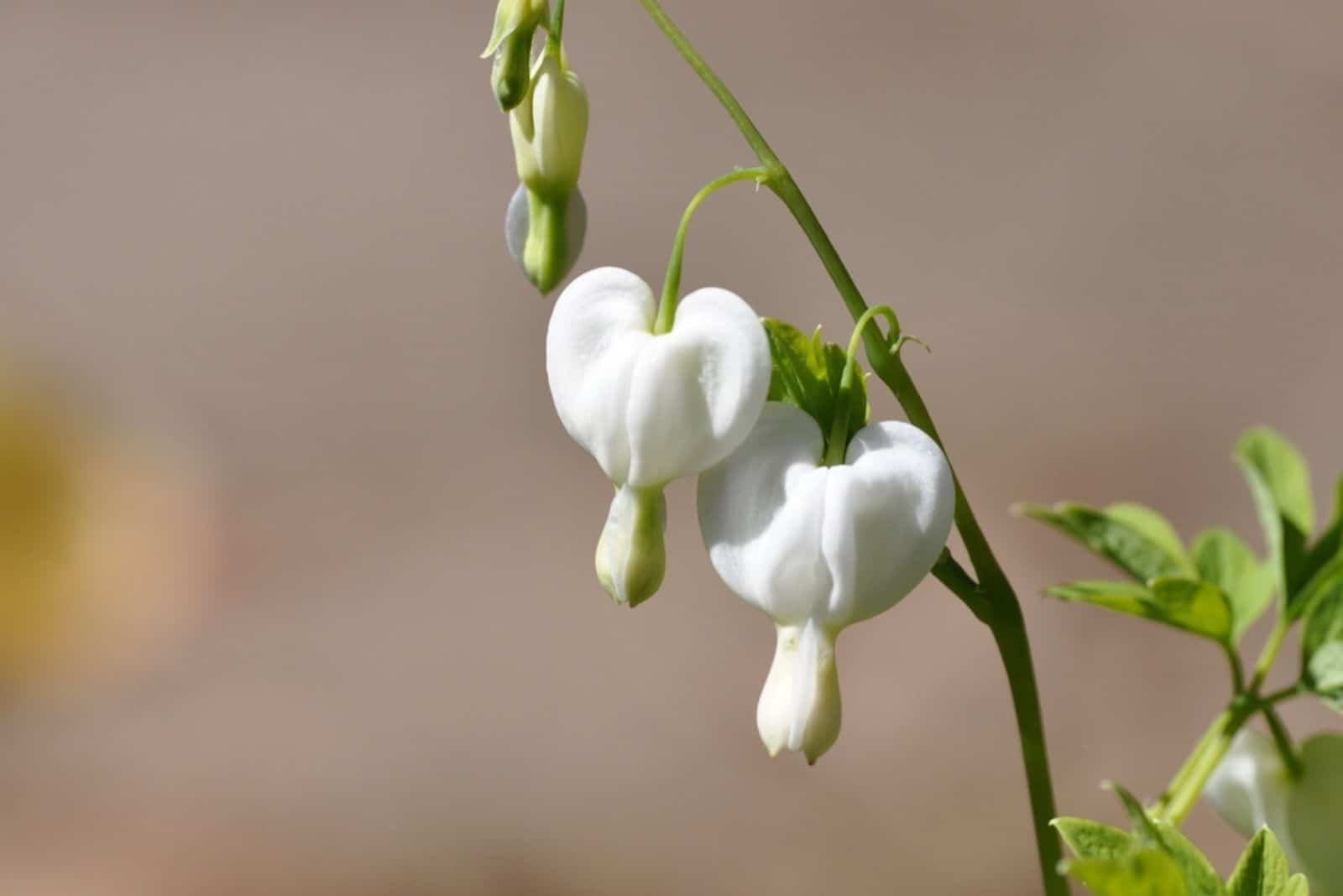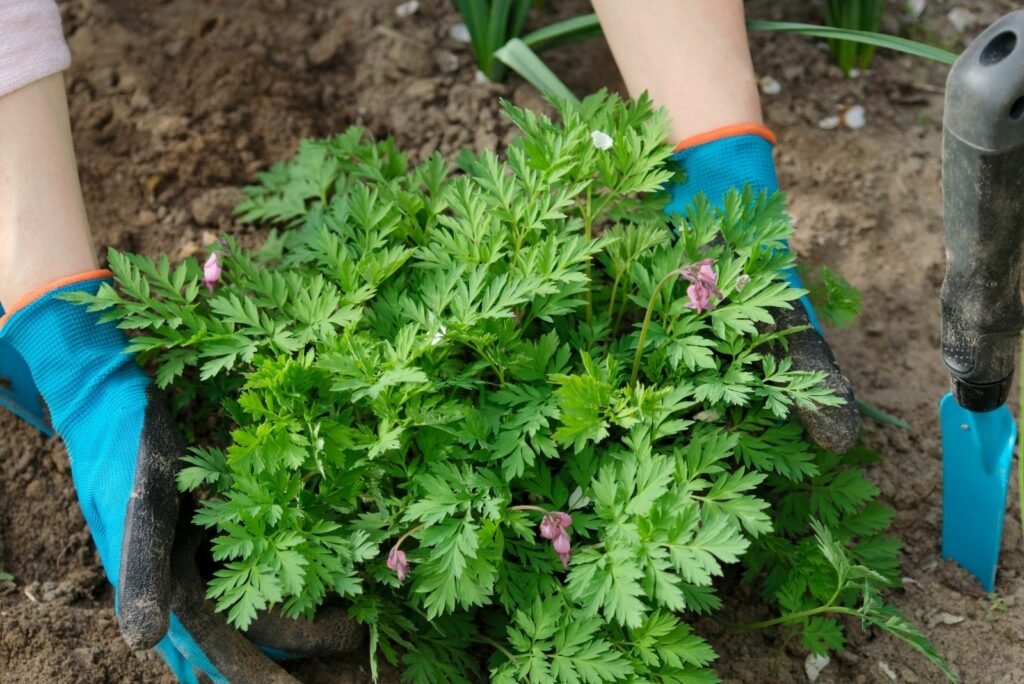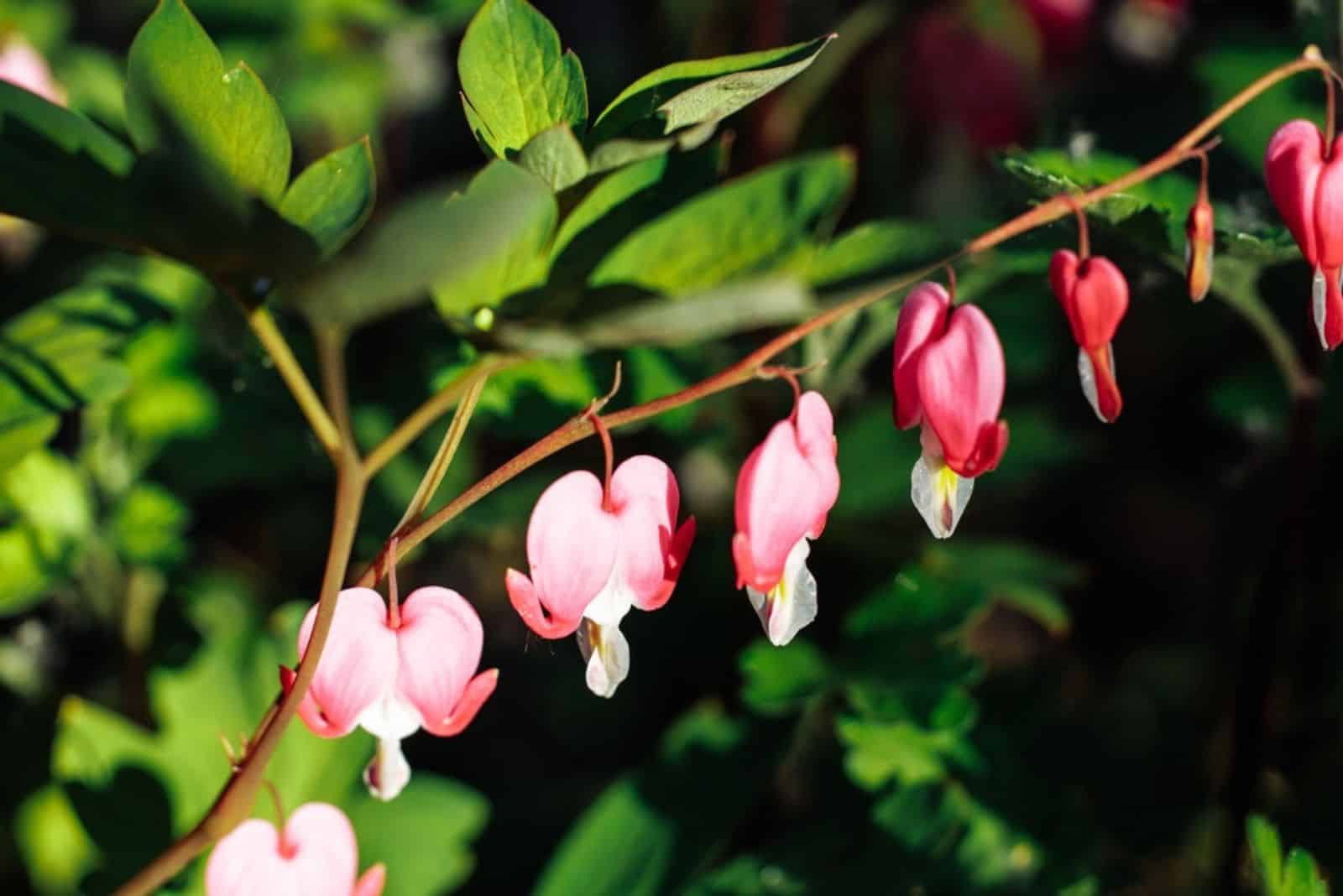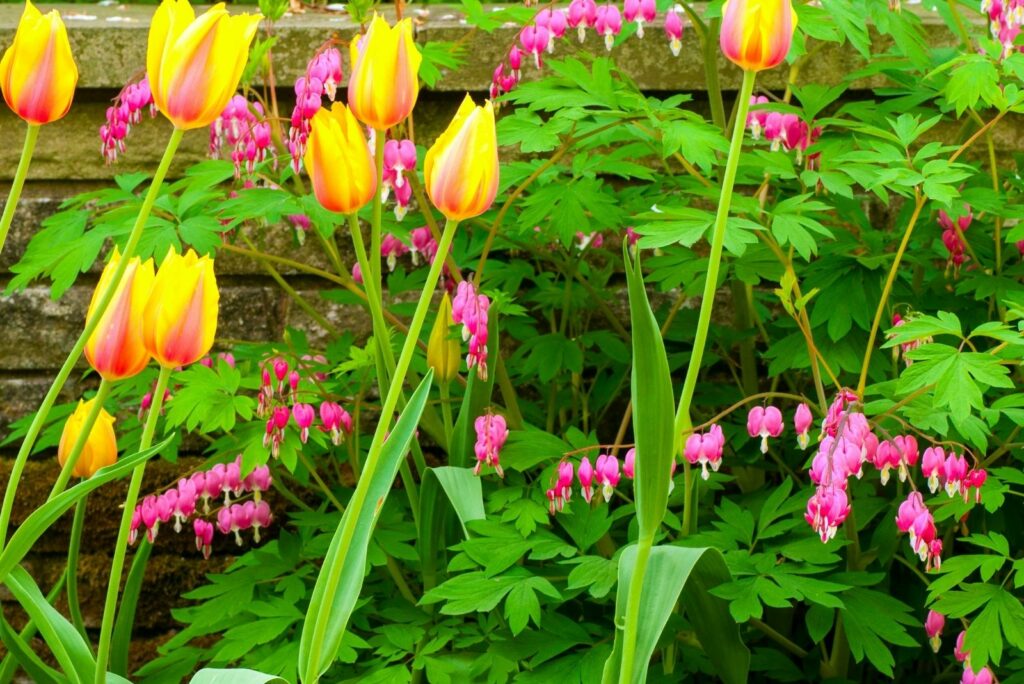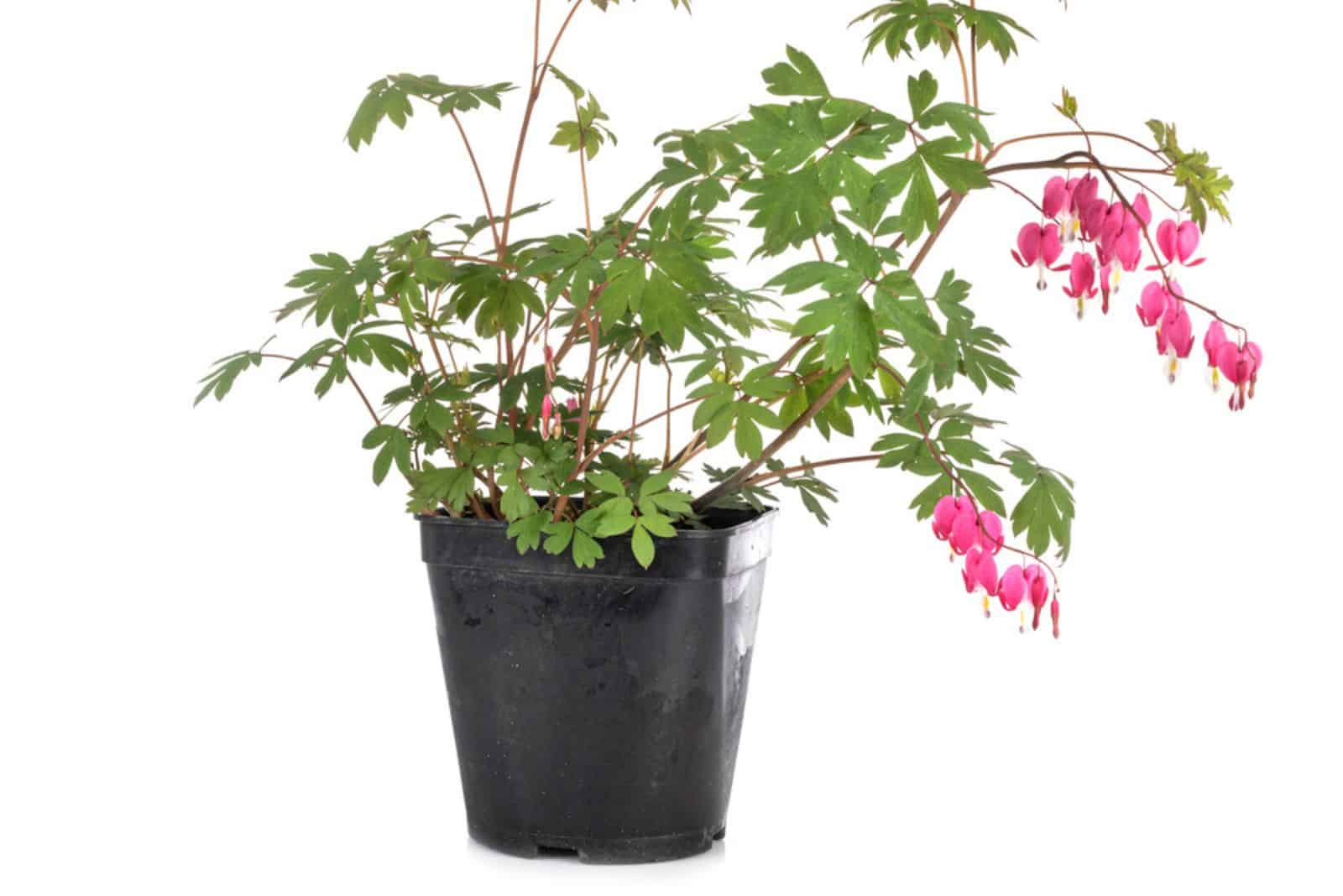The Bleeding Heart plant is a true masterpiece of nature! If you’ve ever wanted to grow this enchanting beauty of a plant, you’re in the right place.
I’ll show you 7 tried and true tips for Bleeding Heart plant care to help you keep it healthy and encourage it to produce an abundance of blossoms.
Since one plant is never enough, I’ll also show you how to propagate your Bleeding Heart and get more of these amazing plants for free.
So, grab your gardening gloves, the flowering season is about to begin!
Bleeding Heart Varieties
Interestingly, the name Bleeding Heart is used for a few varieties, but not all of them belong to the same genus.
One of the most famous species is the Lamprocapnos spectabilis, which was previously known as Dicentra spectabilis. (1) This species is native to Korea, Japan, Siberia, and Northern China.
It typically doesn’t exceed 3 feet tall and features fern-like leaves with large pink or white blossoms.
The Dicentra formosa is another plant species that goes by the name Bleeding Heart, but it remained in the Dicentra genus. This North American plant features pink or purple blossoms.
Both varieties will attract hummingbirds and other pollinators to your garden!
The Bleeding Heart is a toxic plant, so keep it out of reach of small children and pets!
The Meaning Of Bleeding Heart Flowers
If you’re a bookworm, you must’ve heard of the Legend of the Bleeding Heart. Even if you’re not, I’m sure you can guess from the name that it’s a tragic love story.
This flower is often associated with rejected love, but also romance.
So, if you’re into floriography, I’m sure you’re gonna love this flower in your garden. The fact the Bleeding Heart plant has low care requirements makes it a win-win situation!
How To Care For The Bleeding Heart
Although this gorgeous perennial isn’t fussy about growing conditions, there are some things to pay attention to if you want to get an abundance of blossoms.
Let’s dive straight in!
1. How And Where To Plant A Bleeding Heart
The first thing you need to do if you decide on growing the Bleeding Heart plant is find a perfect spot.
Both varieties flourish in nutrient-rich and moist soil types. Adding compost prior to planting is the easiest way to ensure enough nutrients.
The essential factor in Bleeding Heart care is the light level. These plants love shade and the more sun they receive, the fewer blossoms they’ll display.
Find a spot in your garden where your Bleeding Heart will be protected from strong sun rays.
2. How To Make The Bleeding Heart Bloom Twice
If you want to extend the flowering season of this plant species, you need to cut down its stem to one inch above the soil line when all the blossoms fade out.
All you need to do after the cutting is keep the plant protected from full sun.
3. How To Force The Bleeding Heart Into Early Bloom
You can speed things up and get your Bleeding Heart to bloom before its expected flowering season.
The first step is to remove the plant from the ground in the fall. Handle with care because any force can damage the root system. Transfer the plant to a container filled with nutrient-rich soil and put it in a frost-free room.
A few months later, typically in January, raise the temperatures to approximately 70 degrees Fahrenheit. You can expect this exquisite plant species to bloom in about a month and a half.
4. Bleeding Heart Propagation Tips
The good news is that you can easily get more Bleeding Heart plants using 3 different propagation methods: seeds, stem cuttings, and clump division.
Propagating this perennial from seeds is time-consuming. You need to sow the seeds indoors in the fall, cover them with a plastic bag, and keep them in a freezer for about 2 months. Then you’ll need to gradually raise temperatures and exposure to light.
If you decide on the division method, divide the clumps in September.
The third Bleeding Heart propagation method is stem cutting. Remove new shoots at the beginning of May and put them in a well-draining and porous growing medium. Put a plastic bag over the Bleeding Heart cuttings and transplant them after 4 weeks.
5. Transplantation
Your Bleeding Heart may not be happy with its current spot for many reasons, such as wind and light exposure or soil type. In this case, you’ll need to transplant it.
There’s one thing to consider before taking your Bleeding Heart to a new location.
When transplanting this plant, you need to choose the right time. Never replant your Bleeding Heart in the growing season (summer) because this will shock it and cause severe damage to its health.
The best time for transplantation is at the beginning of the growing season (spring). Alternatively, replant your Bleeding Heart when dormant, which is typically in late fall.
The question is what to do with the plant if it displays signs of distress during the growing season? All you need to do is remove diseased or discolored foliage.
6. The Best Companion Plants For Bleeding Heart
The blossoms of this plant look breathtaking when in full bloom, but once its leaves lose their original color and start withering, the garden can look pretty unattractive.
A great solution is to cut the plant to approximately 1 inch above the soil line and plant some companion plants.
I recommend planting Heucheras, tulips, ferns, and hostas as companions.
7. How To Grow The Bleeding Heart In Pots
Bleeding Heart plants are mostly cultivated in gardens and planted directly in the ground, but they also do well in pots.
If you decide on this growing method, you need to consider a few things. First, you need to select the right container in terms of size; 12 inches in diameter will suffice.
Second, you need to plant your Bleeding Heart in a high-quality, free-draining potting mix.
And third, you need to repot the plant approximately every 4 years; simply divide the clumps and plant them into separate pots.
By following our guidelines, your Bleeding Heart will thrive and adorn your garden with its magnificent blossoms for many years to come!
Until next time.
References
1. Lamprocapnos spectabilis (Asian Bleeding Heart, Bleeding Heart, Japanese Bleeding Heart, Locks and Keys, Old-Fashioned Bleeding Heart, Showy Bleeding Heart) | North Carolina Extension Gardener Plant Toolbox. (n.d.) https://plants.ces.ncsu.edu/plants/lamprocapnos-spectabilis
2. Ibid.

